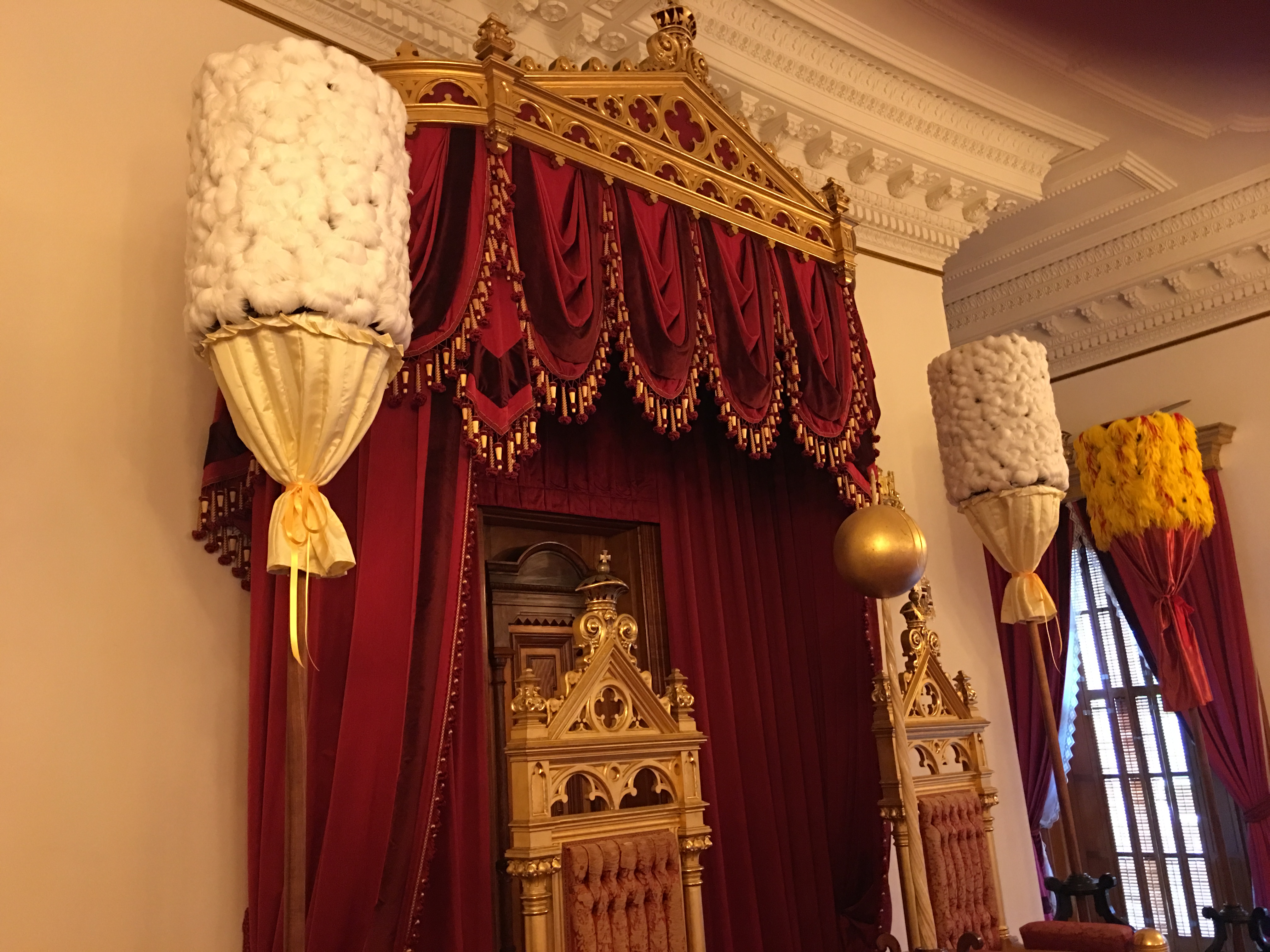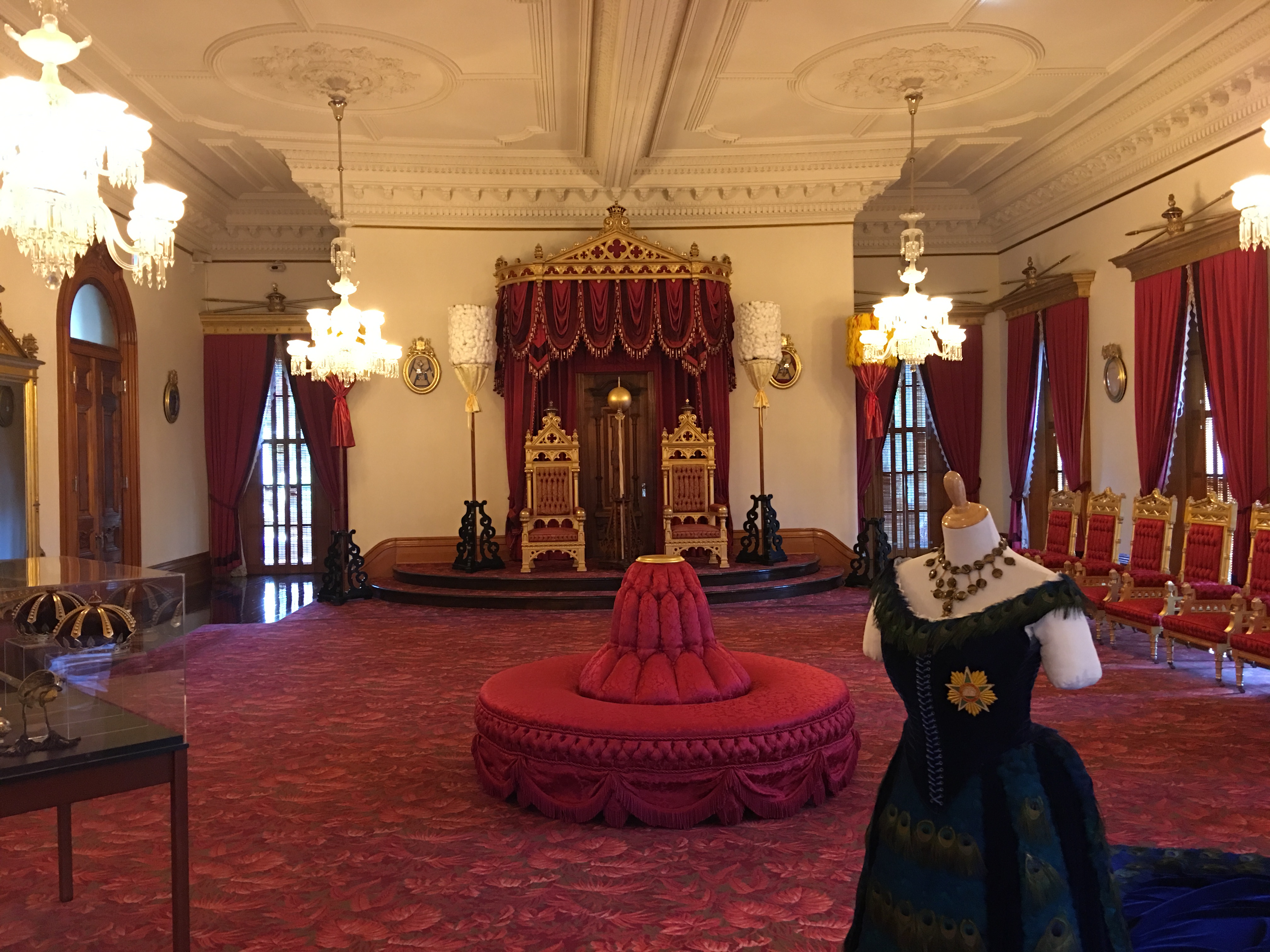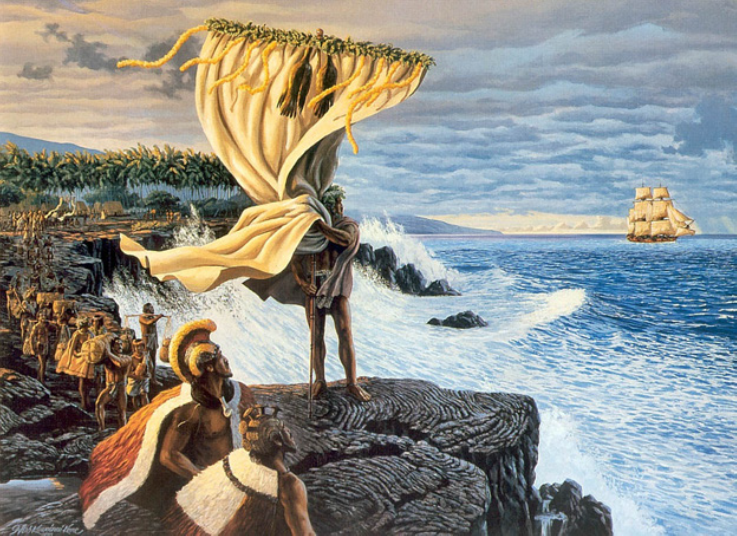
“Lono-makua (Father Lono) is constructed of a tall post with a kiʻi (image) of Lono, pala lei, Ka’upu, and white kapa attached at the cross piece”, image from Lindsay Young
In the main albatrosses breed on out-of-the-way islands, some distance from human habitations. With some significant exceptions, notably by in the North Pacific where they and their eggs were once heavily exploited for food or feathers and their guano collected, albatross colonies have tended to be left alone from direct persecution. Other past exploitive practices are briefly summarized with selected references listed below.
Sailing ships traversing the Southern Ocean in times past would use a trailing line with a baited hook to catch albatrosses to eat (including any eggs found within them) or just for sport. Birds were shot at by passengers with no or little chance of their recovery. Birds brought aboard were used by sailors to make tobacco pouches by skinning their webbed feet, using wing bones for pipe stems, and plucking their feathers for muffs and boas. On land, albatross chicks and eggs were regularly collected on their sub-Antarctic breeding islands and eaten by sealers and shipwrecked mariners in the 19th century – and their feathers were plucked to make rough bedding to use ashore. The inhabitants of the Tristan da Cunha islands collected albatrosses and eggs (mainly Atlantic Yellow-nosed Thalassarche chlororhynchos) to eat well into the first half of the 20th Century; they are now fully protected. Māori and Moriori people visited New Zealand albatross islands for exploitive purposes in the past with requests for takes extending into the second half of the 20th century. It seems albatrosses (and petrels) that are accidentally or intentionally caught by fishers in Namibian and Peruvian waters may still be cooked and eaten; but the activity was last recorded with any certainty in South African waters in the 1970s. Old recipes on how to cook albatrosses may be found in the occasional cookbook. Read more on exploitive use here.
Not many of these past exploitive uses can easily be described as ‘cultural’ but in the Hawaiian islands there is a long history extending to the current day of including albatross parts such as their feathers in cultural practices as informed by ACAP Latest News correspondents.
Beth Flint, US Fish & Wildlife Service writes: “the feathers (actually the whole pelt) of Black-footed Albatrosses or Ka’upu [Phoebastria nigripes] are used to make a standard or staff depicting Lono [Hawaiian god of farming and fertility] that is carried in a procession during the Makahiki season [ancient Hawaiian New Year festival] around the island. There are cultural practitioners with Federal migratory bird permits that use birds (typically those killed as bycatch in the fisheries) to make the staff with among other things a Ka’upu.”

Lono-makua, image from Beth Flint
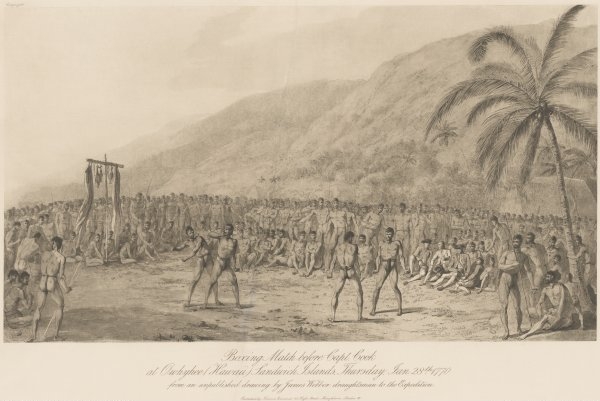
A Lono-makua is visible on the left with suspended albatross skins
Kahili standards either side of the Iolani Palace thrones, photographs from Hob Osterlund
Hob Osterlund, Kaua’i Albatross Network, has also written from Hawaii: “In terms of Hawaiian culture, I am … aware of the use of Laysan Albatross [P. immutabilis] bones for tattoo needles. They too are called Mōlī”. Also of note are the kahili (royal standards) created from Kaʻupu and Mōlī feathers. These kahili stand on either side of the thrones at Iolani Palace in Honolulu. The feathers were collected [under Migratory Bird Treaty Act permit] from the bodies of dead albatross chicks on Midway Atoll. Kahili can also be found in Honolulu’s Queen Emma Summer Palace. The master feather worker in Hawaiian culture is called a “kiamanu”. Such a person knows the craft of feather work but also knows the birds in a deeper sense.”
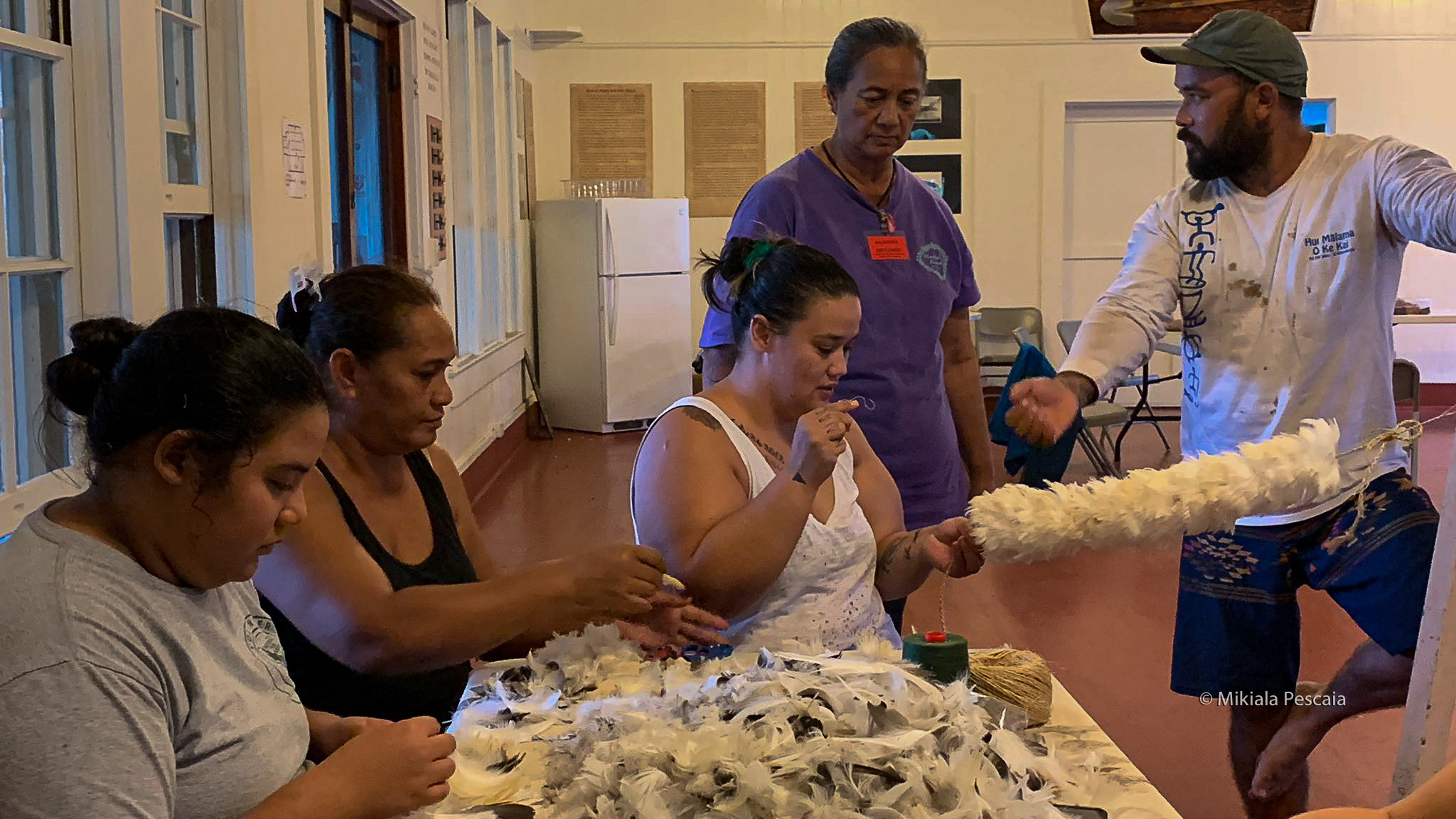
Making a feather lei by members of the Kiamanu Project
Feathers collected under permit from Kure Atoll have been used in workshops by the Kiamanu Project to create lei, mōlī and kahili as part of ensuring such cultural activities are not lost. The project aims to support the perpetuation of traditional practices and ceremonies that promote responsible environmental kinship and whose tools and feather products were traditionally made from seabirds.
For an unusual ‘cultural’ use of a pair of albatross wings click here.
References:
Avery, G. 1979. Results of beach patrols conducted in 1978. Cormorant 6: 4-12.
Barwell, G. 2014. Albatross. London: Reaktion Books. 208 pp. [REVIEW]
Cooper, J. 1977. Editorial. Cormorant 3: 3.
Crawford, A.B. 1941. I Went to Tristan. London: Hodder & Stoughton. 268 pp.
Gerber, H. 1957. Traditional Cookery of the Cape Malays. Food Customs and 200 Old Cape Recipes. Cape Town: A.A. Balkema. 127 pp.
Medway, D G. 1998. Human-induced mortality of Southern Ocean albatrosses at sea in the 19th century: a brief historical review. In: Robertson, G. & Gales, R. (Eds). Albatross Biology and Conservation. Chipping Norton: Surrey Beatty & Sons. pp. 189-198.
Murphy, Robert Cushman 1948. Logbook for Grace. Whaling Brig Daisy, 1912-1913. London: Robert Hale. 290 pp.
Rauzon, M.J. 2001. Isles of Refuge: Wildlife and History of the Northwestern Hawaiian Islands. Honolulu: University of Hawai’i Press. 206 pp.
Robertson, C.J.R. 1991. Questions on the harvesting of Toroa in the Chatham Islands. Science and Research Series 35: 1-105. Wellington: Department of Conservation.
Tickell, W.L.N. 2000. Albatrosses. Mountfield: Pica Press. 448 pp.
[Tourist Office] undated. Recipes from Tristan da Cunha. Tristan da Cunha: Tourist Office. 29 pp.
With thanks to Beth Flint, Hob Osterlund, Christopher Robertson and Lindsay Young.
John Cooper, ACAP Information Officer, 13 December 2020, uodated 26 December 2020

 Español
Español  English
English  Français
Français 